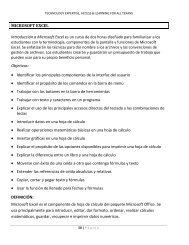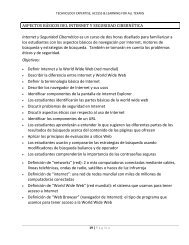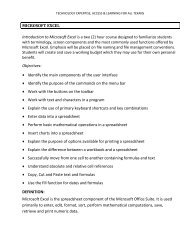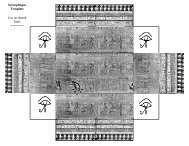Begin with the End in Mind: A Records Management & Archives ...
Begin with the End in Mind: A Records Management & Archives ...
Begin with the End in Mind: A Records Management & Archives ...
You also want an ePaper? Increase the reach of your titles
YUMPU automatically turns print PDFs into web optimized ePapers that Google loves.
Please visit <strong>the</strong> Texas State Library and <strong>Archives</strong> Commission’s website to access this<br />
manual: https://www.tsl.state.tx.us/slrm/recordspubs/rmm.html<br />
4.2 Steps to a <strong>Records</strong> <strong>Management</strong> Program<br />
As archivists have discovered, particularly <strong>in</strong> <strong>the</strong> case of long-serv<strong>in</strong>g legislators whose<br />
records can be quite volum<strong>in</strong>ous, work<strong>in</strong>g <strong>with</strong> records creators at <strong>the</strong> beg<strong>in</strong>n<strong>in</strong>g of <strong>the</strong><br />
records life cycle results <strong>in</strong> better-organized and more accurately described archival records.<br />
Once <strong>the</strong> Texas State <strong>Archives</strong> receives your records, it is too late to <strong>in</strong>fluence <strong>the</strong> system, and<br />
archivists must cope as well as <strong>the</strong>y can <strong>with</strong> <strong>the</strong> records <strong>the</strong>y receive.<br />
Take a moment to answer <strong>the</strong> follow<strong>in</strong>g questions:<br />
Do you and your staff know what a records retention schedule is?<br />
Do you and your staff know where <strong>the</strong> records retention schedule is filed?<br />
Do you and your staff know <strong>the</strong> record types that should be transferred to <strong>the</strong> Texas<br />
State <strong>Archives</strong>?<br />
Is <strong>the</strong>re a staff member <strong>in</strong> charge of records management <strong>with</strong><strong>in</strong> your office?<br />
Do you have a way to preserve electronic<br />
records, such as e-mail and those created on<br />
<strong>the</strong> Legislative <strong>Management</strong> System and<br />
Correspondence <strong>Management</strong> System?<br />
Do you know <strong>the</strong> difference between <strong>the</strong> State<br />
<strong>Records</strong> Center, <strong>the</strong> Legislative Reference<br />
Library and <strong>the</strong> Texas State <strong>Archives</strong>?<br />
<strong>Records</strong> <strong>Management</strong> Objectives:<br />
1. Establish a comprehensive, office-wide<br />
records plan that specifies "where to file<br />
<strong>in</strong>formation" and "how to f<strong>in</strong>d it."<br />
2. Create discrete and identifiable office file<br />
series that are arranged accord<strong>in</strong>g to<br />
guidel<strong>in</strong>es listed <strong>in</strong> <strong>the</strong> records retention schedule.<br />
Establish<strong>in</strong>g an effective records<br />
management program <strong>in</strong> your<br />
office requires a commitment from<br />
you!<br />
Tips:<br />
- Make copies of <strong>the</strong> records<br />
retention schedule widely<br />
available and easily accessible.<br />
- Refer to it on a regular basis,<br />
perhaps at <strong>the</strong> beg<strong>in</strong>n<strong>in</strong>g and end<br />
of <strong>the</strong> legislative session.<br />
- Compliance is key to success.<br />
3. Establish guidel<strong>in</strong>es and procedures for ma<strong>in</strong>ta<strong>in</strong><strong>in</strong>g and preserv<strong>in</strong>g <strong>in</strong>formation on<br />
office computers.<br />
4. Identify archival records.<br />
15






![Harry Potter [pdf]](https://img.yumpu.com/27329912/1/190x245/harry-potter-pdf.jpg?quality=85)
![Aplicaciones del Programa de Libros que Hablan [pdf] - Texas State ...](https://img.yumpu.com/27329907/1/190x245/aplicaciones-del-programa-de-libros-que-hablan-pdf-texas-state-.jpg?quality=85)








